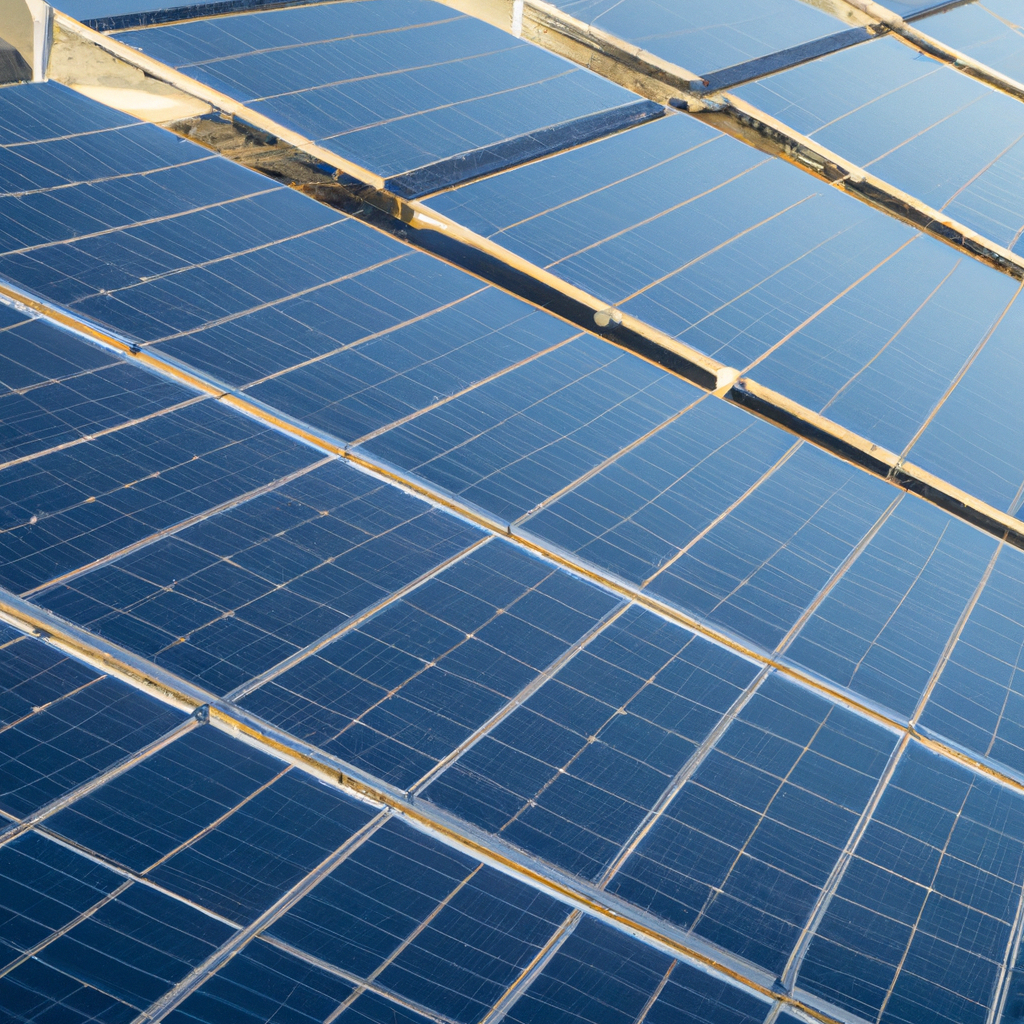Welcome to our comprehensive guide on harnessing the power of solar energy! In this article, we will walk you through the step-by-step process of installing solar panels on your roof, enabling you to reduce your energy bills and contribute to a more sustainable future. Solar energy is a renewable and clean source of power that allows homeowners to generate electricity right at their doorstep. By following our easy-to-understand instructions, you’ll be well on your way to reaping the benefits of solar power in no time.

Understanding Solar Energy
Before delving into the installation process, it’s important to grasp the fundamentals of solar energy. Solar power is generated through the conversion of sunlight into electricity using photovoltaic (PV) panels. These panels are composed of multiple solar cells made of semiconductor materials, typically silicon. When sunlight strikes these cells, it creates an electric field that generates direct current (DC) electricity. An inverter then converts the DC electricity into alternating current (AC), which can be used to power your home.
Assessing Your Roof’s Suitability
Not all roofs are created equal when it comes to solar panel installation. Before proceeding, it’s crucial to evaluate your roof’s suitability. Ideally, your roof should be south-facing and receive ample sunlight throughout the day. Shade from nearby trees or buildings can significantly affect the performance of your solar panels, so it’s important to ensure there are no obstructions. Additionally, the age and condition of your roof should be considered. If your roof is in need of repairs or nearing the end of its lifespan, it may be wise to address those issues before installing solar panels.
Calculating Your Energy Needs
To determine the number of solar panels required to meet your energy needs, you must first assess your current electricity consumption. Start by examining your past utility bills to determine your average monthly usage in kilowatt-hours (kWh). By multiplying this value by 12, you can estimate your annual electricity consumption. Keep in mind that solar panels produce varying amounts of electricity based on their wattage and the amount of sunlight received. To ensure sufficient energy production, it’s advisable to consult with a solar energy professional who can provide accurate calculations tailored to your specific requirements.
Choosing the Right Solar Panel System
Selecting the appropriate solar panel system is crucial to maximize your energy output and long-term savings. There are several factors to consider when making this decision, including the size of your roof, your energy consumption goals, budgetary constraints, and local regulations. Monocrystalline and polycrystalline solar panels are the two most common types available. Monocrystalline panels are slightly more efficient but come at a higher cost, while polycrystalline panels offer a more budget-friendly option. Additionally, you’ll need to choose between roof-mounted and ground-mounted systems based on available space and personal preference.
Navigating the Installation Process
Now that you’ve determined the suitability of your roof and chosen the right solar panel system, it’s time to dive into the installation process. While it’s possible to install solar panels yourself, it’s recommended to hire a professional installer to ensure safety and optimal performance. The process typically involves the following steps:
- Permitting and paperwork: Before installation can commence, you’ll need to secure any necessary permits and complete the required paperwork. This process may vary depending on your location and local regulations.
- Roof preparation: The installation team will begin by preparing your roof for the solar panel mounting system. This may involve cleaning the roof, reinforcing it if necessary, and ensuring proper waterproofing.
- Mounting the panels: Once the roof is ready, the solar panels will be mounted securely. The mounting system will depend on the type of roof you have, whether it’s asphalt shingle, metal, or tile.
- Electrical connections: After the panels are in place, the installer will proceed with wiring the system. This includes connecting the panels to an inverter, which converts the DC electricity into usable AC electricity. The inverter is typically installed near your electrical panel.
- System testing and activation: Once the electrical connections are complete, the installer will test the system to ensure everything is functioning correctly. They will also guide you on how to monitor and maintain your solar panel system for optimal performance.
Reaping the Benefits of Solar Power
Congratulations! With your solar panels installed and operational, you are now poised to enjoy the numerous benefits of solar power. Here are just a few advantages you’ll experience:
- Reduced energy bills: By generating your own electricity, you’ll significantly reduce your reliance on the grid, resulting in substantial savings on your energy bills.
- Environmentally friendly: Solar energy is a clean and renewable source of power, producing zero greenhouse gas emissions. By going solar, you’ll be actively contributing to a greener planet.
- Increased home value: Solar panel systems are considered a valuable home improvement, often increasing the resale value of your property. Many potential homebuyers are attracted to the prospect of lower energy costs.
- Government incentives: Depending on your location, there may be various federal, state, or local incentives available to offset the cost of installing solar panels. These incentives can further enhance your return on investment.
Conclusion
In conclusion, transitioning to solar energy offers a multitude of benefits, from reducing your energy bills to making a positive impact on the environment. By understanding the fundamentals of solar power, assessing your roof’s suitability, calculating your energy needs, and following the proper installation process, you can easily harness the power of the sun. Remember to consult with professionals and ensure compliance with local regulations throughout the process. Embrace solar energy and take control of your energy future today!